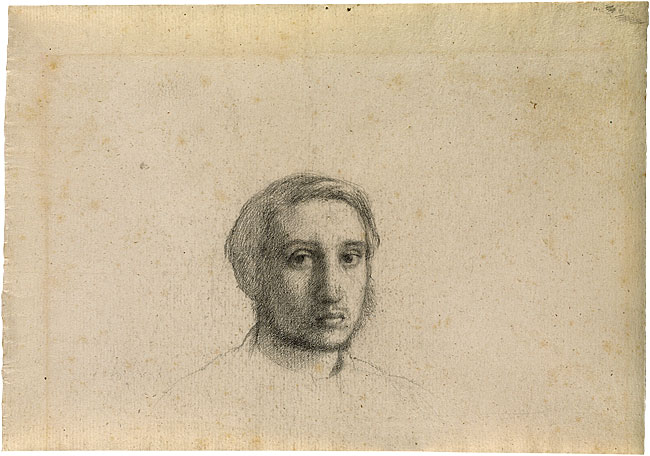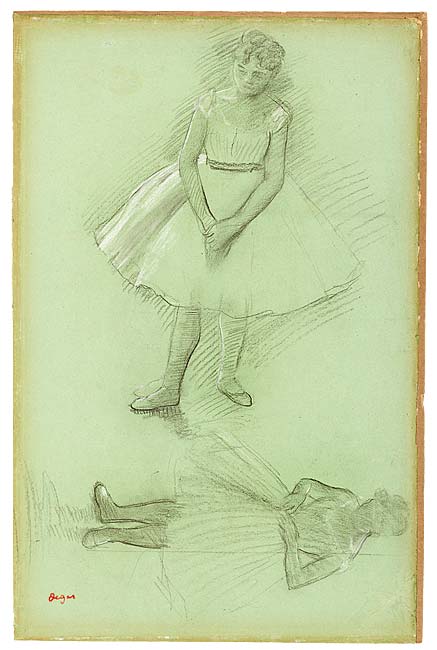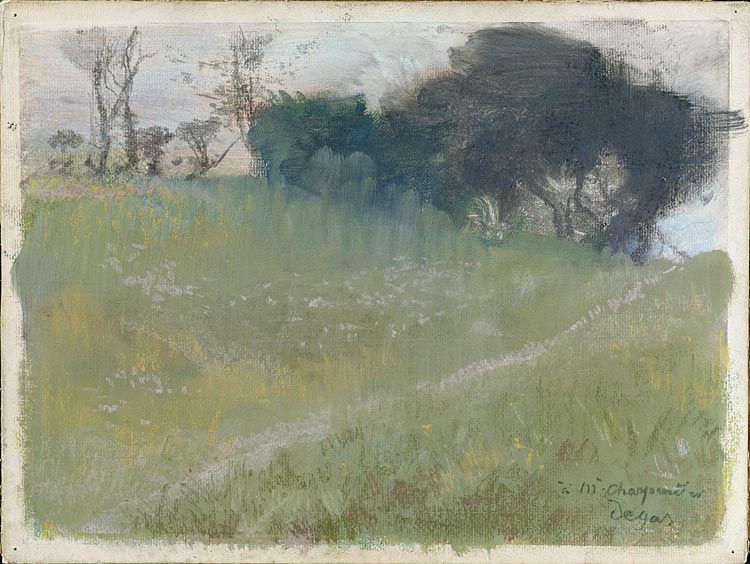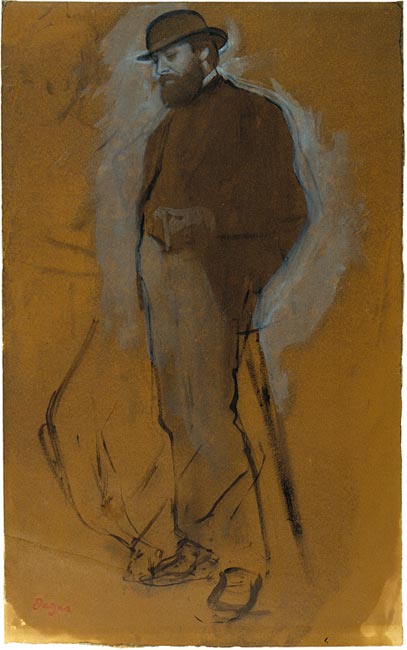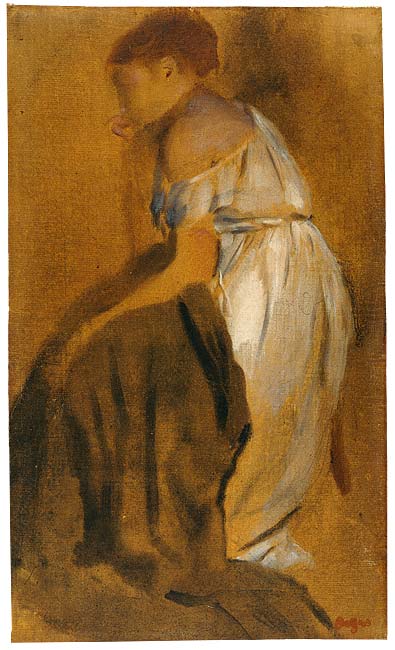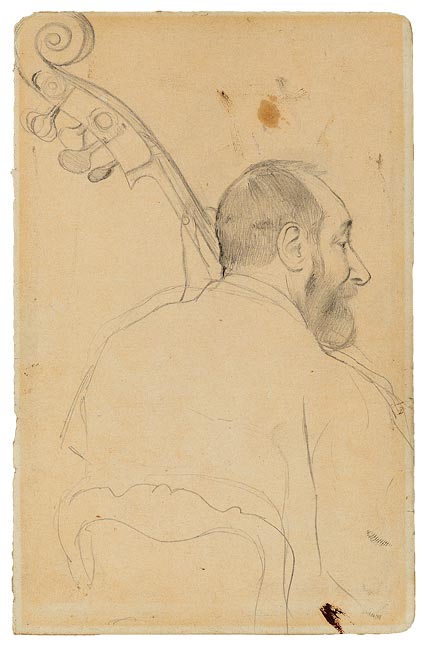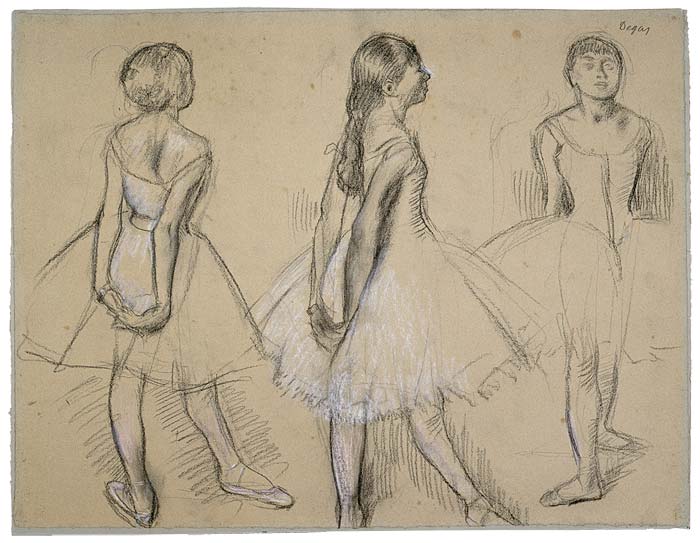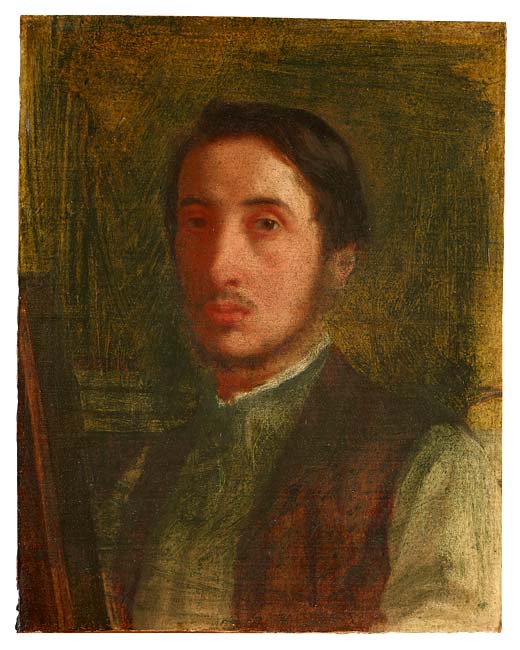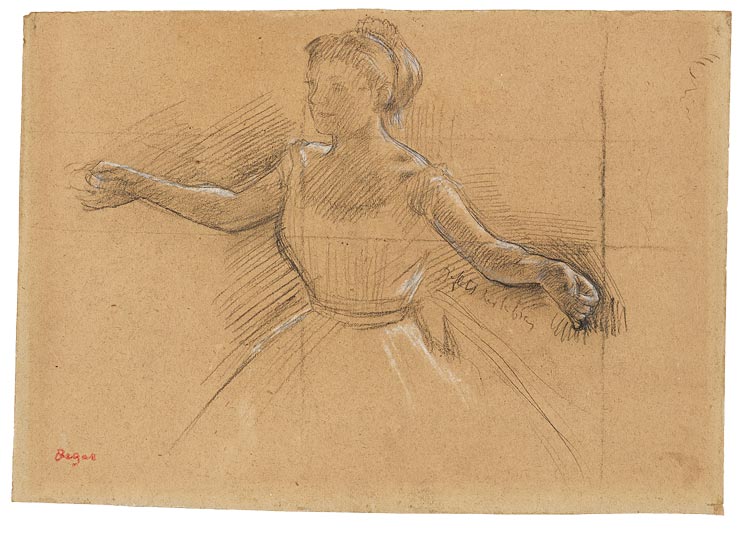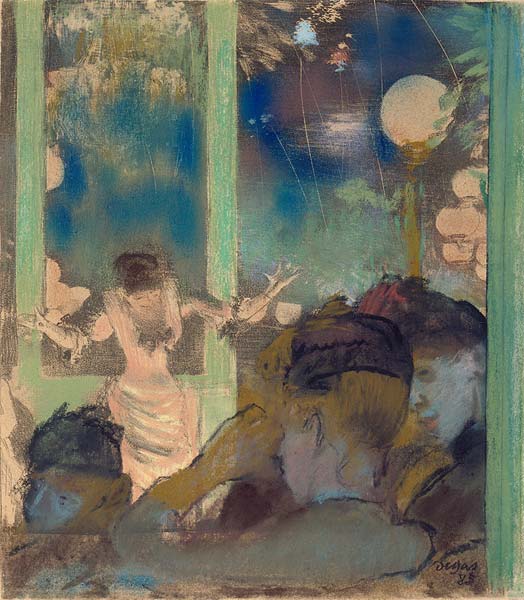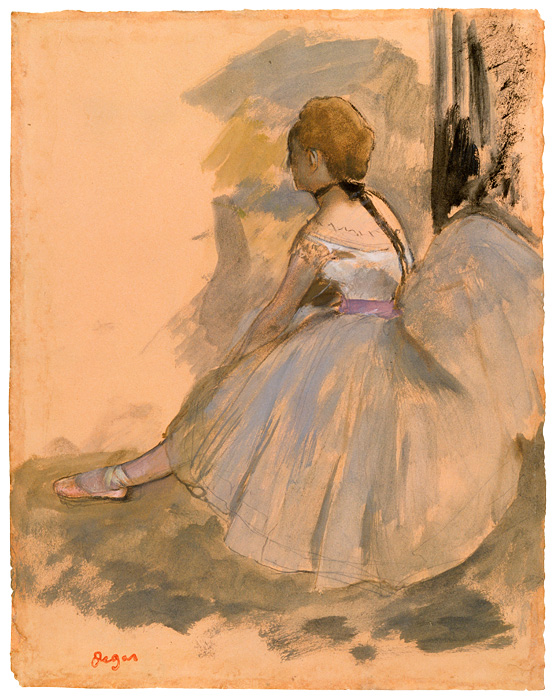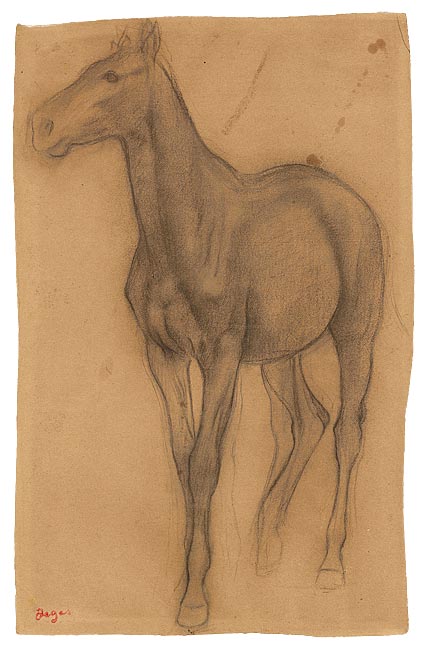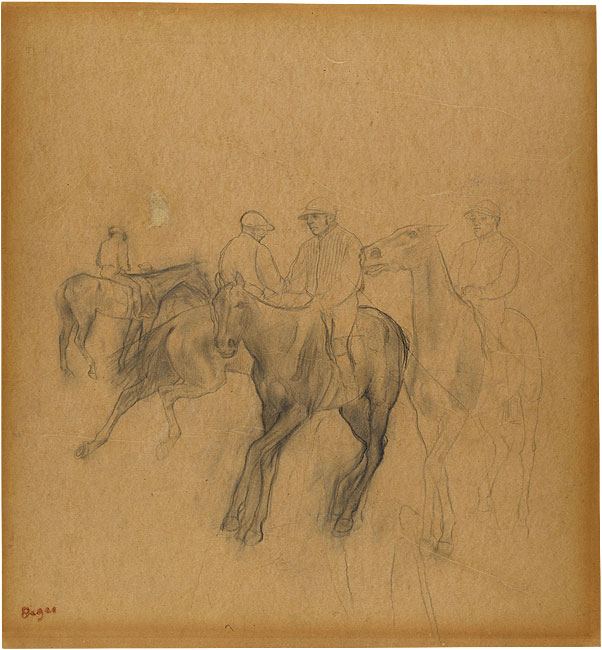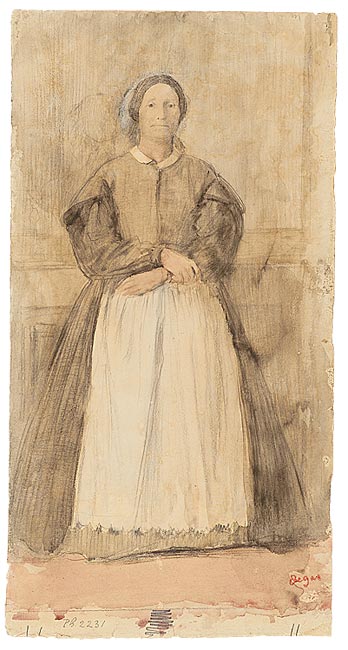A series of self-portraits, drawn and painted, emerged from Degas' youthful period, before 1859. This study was a private exercise in proficiency and discipline and remained in portfolios in Degas' studio until his death.
In the Renaissance manner, Degas explored his visage using light and shadow to model form, deftly achieving subtle effects with fine black chalk. Executed on a half sheet of French paper, this study may have been undertaken just prior to or shortly after his arrival in Rome.

